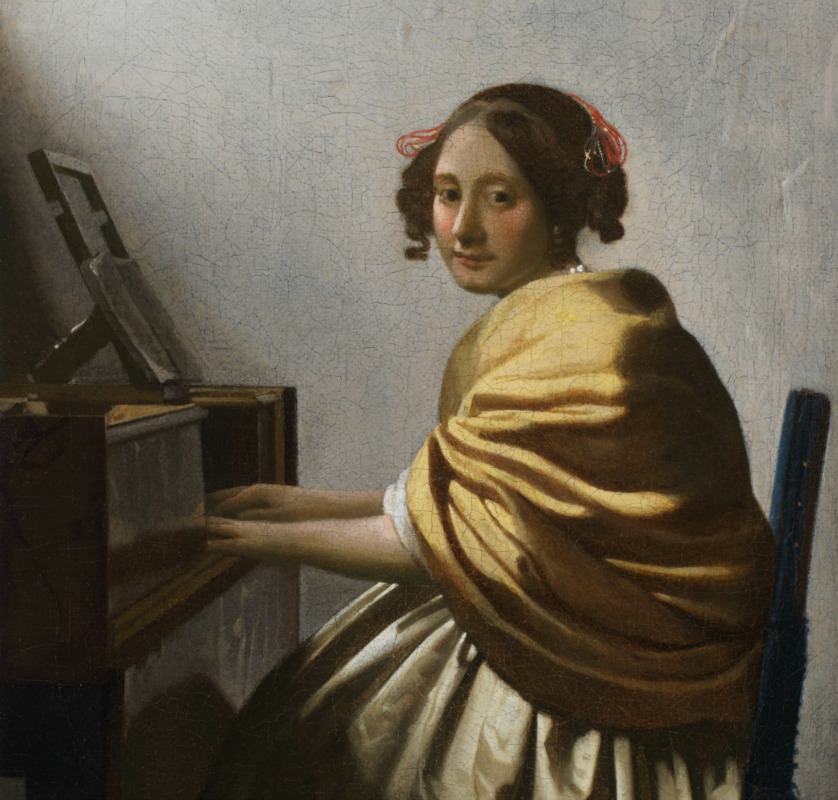‘Martyr’ Is Smarter Than This – Also, The Musical Vermeer At The DMA
ArtandSeek.net January 21, 2016 46
Garret Storms (front) and Andrews Cope (back) in Second Thought Theatre’s ‘Martyr.’ Photo: Karen Almond
With suicide bombers in the Middle East and self-professed terrorists attacking in France and the US, Second Thought Theatre’s staging of the play ‘Martyr’ couldn’t be more timely. But the religious militancy preached here actually comes from a young Christian — although playwright Marius von Mayenberg clearly intends him to mirror Islamic extremism. KERA’s Jerome Weeks sat down with Justin Martin to talk about this Texas premiere of a German play.
It’s rare, isn’t it, for a contemporary German play to move from a world premiere in Berlin and then, within two and a half years, being staged in Moscow, Paris, London, Chicago and now Dallas?
Is that what happens?
But Benjamin is also a rebuke to anyone who thinks Islam is preaching violence while Christianity is entirely peaceful. Benjamin has this unpleasant habit of justifying his actions by quoting the most dogmatic, bloodthirsty passages from the Bible, the ones where prophets call down death and destruction on the enemies of the Israelites. Benjamin even finds a fair amount of intolerance in the New Testament as well. This is Garret Storms playing Benjamin and Alison Pistorius as his biology instructor. She tried to teach a sex ed class, and he objects. That’s St. Paul’s first letter to Timothy he quotes at the end.
Benjamin: So you think the Bible is lying?
Erika: I don’t care about the Bible. I teach biology.
Benjamin: The Bible says –
Erika: I don’t care what the Bible says.
Benjamin: ‘Let a women learn in silence with all submission. And I do not permit a woman to teach or to have authority over a man but to be in silence.’
Wow. So how did the audience react?
So they didn’t know whether to take something seriously?
But the Second Thought Theatre’s physical production itself is handsome and sharp. Darren Diggle’s set design and Aaron Johansen’s lighting evoke the famous Rothko Chapel in Houston – with its austere simplicity, suggesting a kind of smooth, stone spirituality. Frankly, I wish the rest of the show were as attractive. It should be noted there are two stand-out performances. Garret Storms — who’s often seem actor-y to me in the past — plays Benjamin with complete, full-tilt, hot-headed conviction, while Ruben Carrazana plays his sidekick George as the complete opposite, an insecure mouse. George is so beaten down and closeted, he’s just grateful for any attention Benjamin gives him. Carrazana is a sadsack clown.
But because everyone else, by the end, has gone to their own extremes, there’s little that feels fully at stake. Martyrs and suicide bombers are all about raising the stakes. They take what seems an unimportant issue to the rest of us — proper attire for young women swimmers — and push it into a matter of life-or-death. But in the Second Thought production, when gruesome violence does break out at the end and everyone’s yelling and arguing, little feels really at stake because the people don’t feel truly real.

Johannes Vermeer, ‘Young Woman Seated at a Virginal,’ detail, c. 1670-’72. oil on canvas.
I find this fascinating, but anything else open last week?
And you’re playing music because that’s why it’s called a ‘suite’?
So each painting features a musical instrument of some kind — lute, flute or virginal (a kind of harpsichord). Showing off your harpsichord in a portrait was a sign of breeding and class. Playing music was also an amorous sign — a couple playing a little duet together. It was also an entertainment in a brothel, a sign of dissipation. Women are shown playing a lute, for instance, but there’s another instrument nearby — implying someone’s coming to play with them. Music symbolized so much to the Dutch. The use of symbolism added texture to their paintings. It seems counterintuitive but it probably has to do with the Protestantism that ruled the land: The Dutch developed such a strong emphasis on warm, clear, highly detailed realism, yet at the same time, their artworks are rife with symbols, with a language of hidden meanings. The entire subject of Dutch paintings and music and what it meant has been a popular one in recent years, including a major exhibition at the National Gallery in London three years ago. The DMA show is like a pocket version of that show.
Not to be blunt, but why do we care?
So hey, it’s a Vermeer
Thanks, Jerome










